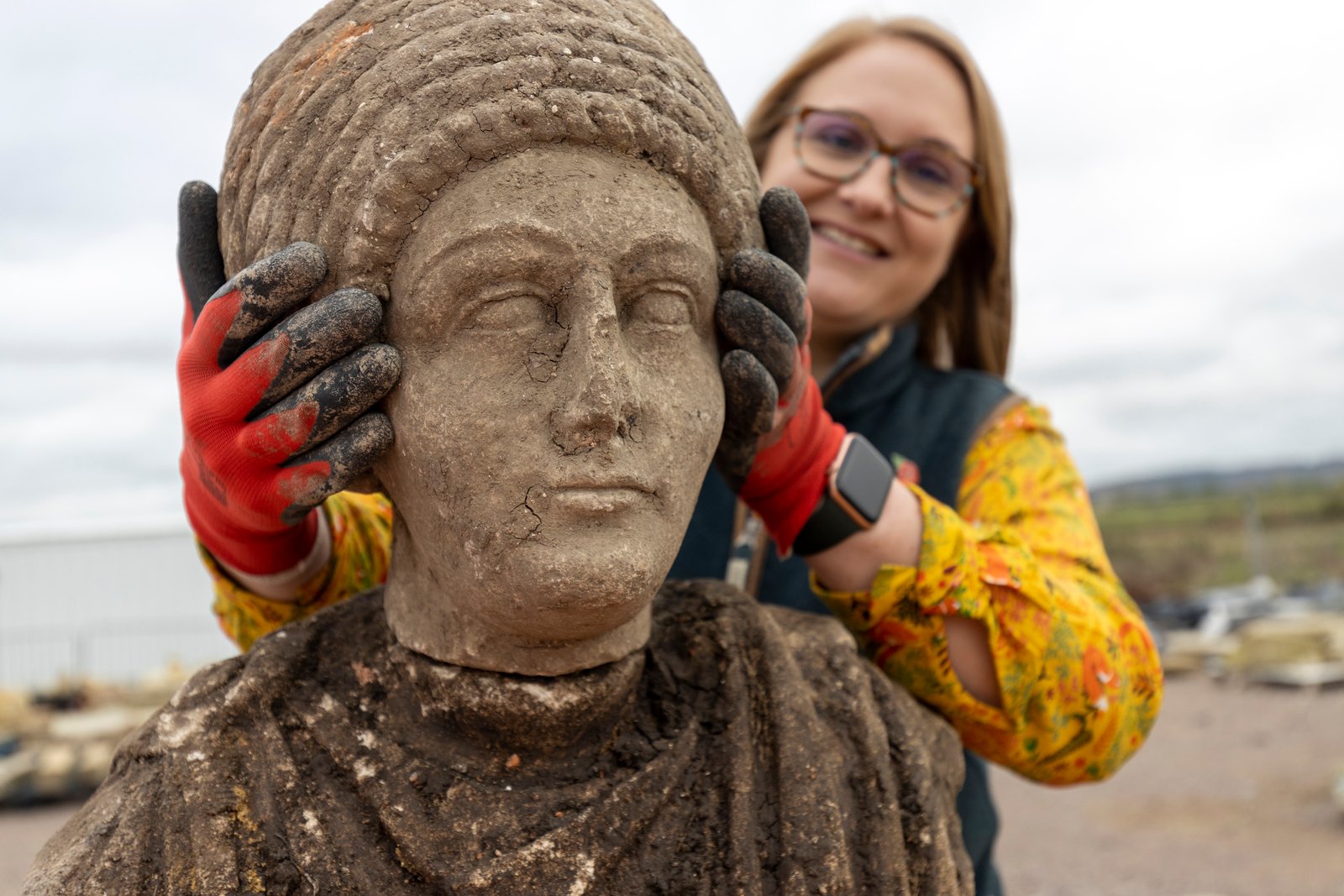
In an unexpected find, archaeologists in England have unearthed three Roman busts near the ruins of an abandoned medieval church roughly 50 miles outside of London.
Two of the stone statues, found surprisingly intact, depict the faces and torsos of an adult man and woman, while the third represents the head of a child. All are characteristic of early Roman sculpture, suggesting that they may date to when England belonged to the Roman Empire from A.D. 43 to about A.D. 410.
“The statues are exceptionally well preserved, and you really get an impression of the people they depict,” said Rachel Wood, the leading archaeologist on the dig, in an announcement. “Literally looking into the faces of the past is a unique experience.”
Wood and her team excavated the objects at the remains of St. Mary’s Church in Stoke Mandeville, Buckinghamshire, where they’ve been at work for the last six months on a dig funded by the national Department of Transport. The site sits in the path of the controversial new HS2 high-speed railway, which will connect corners of the United Kingdom over three phases of construction. (The first, a 140-mile passage from London to the West Midlands region, is expected to open between 2029 and 2033.) It is one of some 60 sites along the future route that have been flagged for excavation, although detractors point out that a 2013 HS2 environmental impact survey identified nearly 1,000 potential sites.
A Norman house of worship, St. Mary’s was erected in 1080, renovated in the 13th, 14th, and 17th centuries, and then abandoned in the late 19th century, according to the Guardian. Prior to that, the spot may have been home to a Bronze Age burial site, experts believe, followed by a Roman mausoleum.
An ancient glass vessel unearthed at the St. Mary’s archaeological dig. Courtesy of HS2.
At the same site, researchers also uncovered a well-preserved hexagonal glass jug, which is similarly believed to be Roman and more than 1,000 years old, as well as roof tiles, cremation urns, and pieces of painted plaster. The archaeologists compared the jug to one currently on display at the Metropolitan Museum of Art, New York.
The objects are being moved to a laboratory for further cleaning and examination, the statement explained. Where they’ll end up after that has not yet been determined.
“Of course, it leads us to wonder what else might be buried beneath England’s medieval village churches,” Wood added. “This has truly been a once-in-a-lifetime site, and we are all looking forward to hearing what more the specialists can tell us about these incredible statues and the history of the site before the construction of the Norman church.”